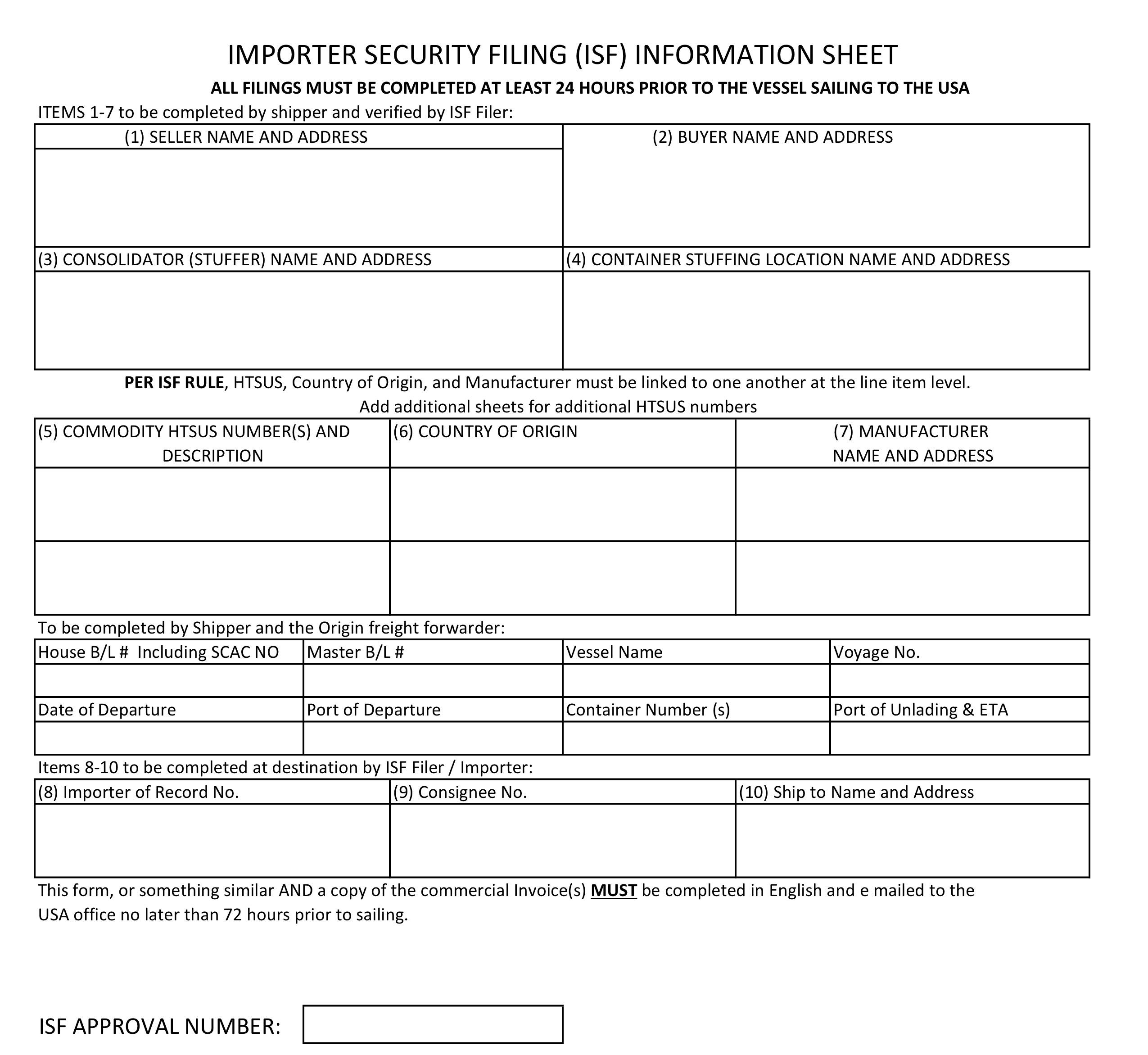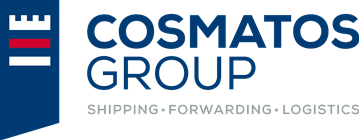The most common terms that we meet when exporting containers to USA are following:
LINER TERMS, US Customs 24-hour Advance Cargo Manifest Rule, ISF FILLING 10+2
But what do these terms mean?
Liner Terms
It means that the terminal handling charges at origin (liner in) and at destination port (liner out) are included in the ocean freight that the shipping companies are offering for any destination at USA.
US Customs 24-hour Advance Cargo Manifest Rule
AUTOMATIC MANIFEST SYSTEM (AMS FILLING) is an electronic cargo information transmission system for documentation at US Customs prior to the arrival of cargo in the USA. It is requested for security reasons.
Shipping lines or NVOCC (non-vessel operating common carrier) are required to submit a specific manifest for the cargo they are shipping to the US customs 24 hours before the departure of the vessel from the last port of transshipment to the port of America.
In case the AMS filling is not done on time, the cnts are not loaded on vessel from the port of transshipment and there is a risk of huge fines.
The details declared in AMS filling are following:
ISF FILLING (10+2) An Importer Security Filing
The US 10 + 2 Electronic Manifest ISF or US Importer Security Filing “10 + 2” is a regulation that requires importers and carriers to submit certain information about containers in advance to U.S. Customs and Border Protection.
“10 + 2” refers to the 10 data elements to be submitted by importers and 2 data elements from carriers. Carriers and importers must submit the additional information to the CBP at least 24 hours before the cargo is loaded onto an ocean vessel bound for or passing through the United States.
The ISF is completed by the shippers before the vessel sails the port of origin and sent to importers in the United States for submission to customs by US customs. For this reason the shipping lines provide to shippers, prior loading, together with the booking nbr, the bill of lading nbr, the SCAC code, the port of transhipment and the estimated time of arrival in the USA.
Required data elements to be submitted for the electronic manifest ISF 10+2
For importers:
For carriers:
In addition, the ISF filler will need the bill of lading nbrs to associate the ISF filing with the appropriate AMS filing (declaration).
Which is the difference between AMS and ISF?
AMS = ADVANCED MANIFEST SYSTEM (Carriers must report their cargo to the customs office of destination before the departure of the vessel).
ISF = Importer Security filling (Before stuffing into the container or loading on vessel, the importer at destination must register the consignment with the customs system – a kind of AMS identification).
Here below a sample template of ISF FORM:

- Complete and accurate details of shipper, consignee and notify party
- Complete and full details of cargo, packaging type, collis, gross weight, harmonized code
- Port of loading
- Last transshipment port before arrival at USA port and estimated departure date
- Vesel name and voyage, SCAC CODE of shipping company
- Estimated arrival time at destination
- Container nbr
- Seal nbr
- Bill of lading nbr
- HAZARDOUS IMO details in case of dangerous cargo
- Ship to name and address
- Manufacturer or supplier name and address
- Buyer Name & Address
- Seller Name & Address
- Consolidator Name & Address
- Container stuffing Location
- Country of origin
- Importer of record number/FTZ applicant identification number
- Consignee number/s
- 6-digit commodity harmonized tariff schedule number
- Container status messages
- Vessel stow plan
- MBL και SCAC
- AMS HBL # και SCAC





